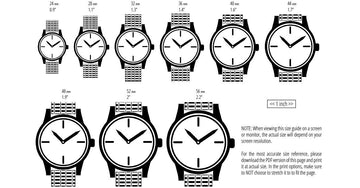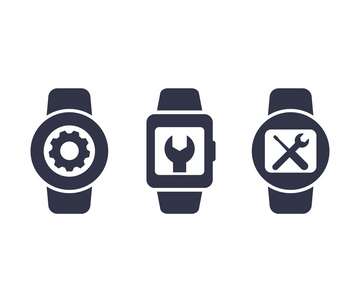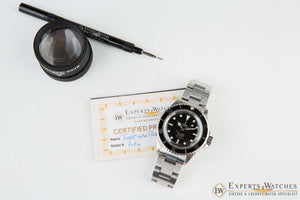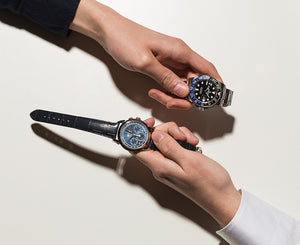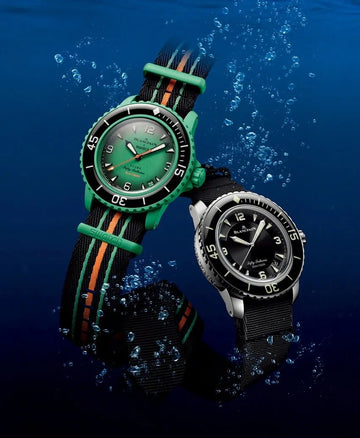Vintage 1970's Hamilton Chrono-Matic Pan Europ 703 11003-3 Cal 11 Blue Watch
Only 1 in stock
Watch Size Guide
EW GUARANTEE
Sell Or Trade Your Watch
Shipping & Payment Information
Care For Your Watch Guide
This is a beauty, so why is this watch so special and rare. it is in original condition, come with navy rubber tropical strap. It is very rare to find a watch this old . Defiantly a collector watch. Please look at all the pictures, as they are part of the description. The watch is working and keeping great time. This is a highly collectible watch. Very few left with this rare movement. Sure, to increase in value overtime, and a great addition to your collection. The condition of the watch is the same as it appears in the photos. The watch is working and is part of our new Certified Pre-Owned CPO Program. Contact me if you have any questions first.
|
SPECIFICATION Brand: Hamilton - Model: Chrono-Matic Pan Europ 703 - Circa: 1970’s |
|
|
Case |
Stainless Steel Case and Case Back. Some Scratches, dings & character |
|
Case Size |
≈ 42,00 mm without the crown and ≈ 45,00 Lug to Lug |
|
Case Back |
Stainless steel cover signed. Screw Back. Please note case back in most cases is not fully tighten. |
|
Crown |
Signed |
|
Crystal |
Acrylic Some Scratches |
|
Bezel: |
Inner Tachymeter, Diving, Bi-Directional 0-60 |
|
Dial: |
Brushed Dark Blue, original condition, Under U.V. light inspection shows good Luminous hands & indices dial, Swiss made Mark, with two register chronograph Hands and date at 6 O'clock. Shows light patina. Please see picture for more detail. |
|
Complication |
Date, Chronograph, Tachymeter. |
|
Movement |
Self-Winding Automatic Signed Hamilton Caliber 11 (base movement as Breitling, Hamilton / Büren, Heuer, Dubois-Dépraz), diameter 31 mm, height 7.7 mm, automatic chronograph movement with microrotor, 19'800 A / h, chronograph with 60 seconds, 30-minute and 12-hour counter, date, incabloc, 17 jewels, 42-hour power reserve |
|
Movement Notes |
Just inspected and in great shape. Movement is running. Keeps great time see below time testing. |
|
Strap |
Tropical Rubber Strap Lug Size: 20 mm Please see picture. |
|
Box |
Come with Beautiful Vintage Style Box. Or Experts Watches Pouch |
|
Reference # |
11003-3 |
|
Made in |
Switzerland |
|
Water Resistance |
No. Please pressure test before water use. |
|
Service Level |
3 (2019) (Please see Tab below for details) |
|
Timing Test ** |
-2s/day In-House Time Test Results (See Service Level Tab)** |
|
Certified Pre-Owned |
Passed 25-point inspection. Please see tab below for details. |
|
Warranty |
3-Month Service Warranty (Please see Tab below for details) |
|
Notes: |
All watch functions tested and operable. Circa 1970's |
The history of the Calibre 11
Starts at the end of 1965. As Büren had pioneered the production of micro-rotor movements, Gérald Dubois (of Dépraz & Co., a chronograph specialist) figured out that these would be thin enough to be the base for a modular chronograph movement. Dubois contacts Hans Kocher of Büren Watch Co. SA. In need of commercial partners, they manage to convince first Jack Heuer and then Willy Breitling to support the project. On February 2nd, 1966, an agreement is signed. The four-party Chronomatic consortium is born, including two rival brands teaming up to develop their own automatic chronograph. For confidentiality purposes, the development is code-named Project 99.
The convention signed on February 2, 1966, between Dépraz & Co., Heuer-Léonidas SA and Léon Breitling SA. The partners asked Büren Watch Co. to build the blanks and the automatic movement of an automatic chronograph, the basic execution of which is designated by calibre No. 111. They have an exclusive right to use this calibre. They plan to have Dépraz develop and manufacture the chronograph mechanism to equip this calibre.
Büren is in charge of the base calibre. Dépraz of the chronograph mechanism. Three brands – Heuer, Breitling and Hamilton (who acquired Buren during the development process) – will fit the movement inside their watches. A patent application for the Calibre 11 is filed in September 1967. At the end of 1968, about 100 pre-production movements are assembled in prevision of the 1969 Basel fair. On March 3rd 1969, the movement is officially presented, simultaneously in New York and Geneva. A month later, the three brands present their first chronographs at the 1969 Basel fair. With the practicality and comfort of automatic winding, the chronograph becomes a staple of motorsport… the Calibre 11 is used to power iconic watches by Heuer (Carrera, Monaco, Autavia), Breitling (Chrono-Matic) and Hamilton (Fontainebleau). And later by other brands such as Bulova, Kelek, Zodiac, Elgin, Stowa…
So, who won the race?
Zenith’s automatic chronograph was the first to be unveiled to the world. It was presented during a press conference in January 1969 and christened El Primero (“the first” in Spanish). The reality is a bit more complex. There are endless debates about which was the first automatic chronograph, as both the Seiko and the Chronomatic movements were announced later the same year. What’s more, El Primero was not the first to hit the market. But the controversy about who came first doesn’t really matter anymore… what is important is the impact that these movements had on watchmaking history. Since then, the automatic chronograph has remained one of the most popular complications.
THE CALIBRE 11
The Calibre 11 is a 17-jewel modular chronograph measuring 31mm x 7.7mm. This modular architecture implies first a base movement, a micro-rotor automatic calibre made by Büren, in charge of the timekeeping part. Beating at 19,800 vibrations per hour, it boasted 42 hours of power reserve. Manufactured by Dépraz, the lever chronograph module is assembled on the backside of the base movement. This movement has a bi-compax display, with a 30-minute counter at 3 o’clock and a 12-hour counter at 9 o’clock – no running seconds sub-dial. The date is indicated at 6 o’clock. The unusual crown position, at 9 o’clock at the opposite of the chronograph pushers, is a signature feature of the movement.
THE CALIBRE 11 AND ITS EVOLUTIONS
Like most movements, the Calibre 11 has been optimized several times over its lifetime. As early as 1969, a barrel spring providing less torque is used. The date jump mechanism is adapted. The sliding pinion is changed and made in steel.
In 1971, a variant running at 21,600 vibrations per hour and named Calibre 12 is introduced. It becomes the main product of the calibre family. It uses a stronger barrel spring. The gear train and balance wheel are adapted. The chronograph hammer is modified to improve shock-resistance.
Testimonials
A watch collectors Paradise…
.....
I have bought few watches from them and recommend them if you are looking to buy a watch. I as actually able to buy few watches from them that were not listed on their website. Apparently they have a lot of inventory that doesn’t even make it to the website. So if your are looking for vintage watches, you might want email them, if you can’t find it on the site.
Thank you for all the help Raymin.
I have bought few watches from them and recommend them if you are looking to buy a watch. I as actually able to buy few watches from them that were not listed on their website. Apparently they have a lot of inventory that doesn’t even make it to the website. So if your are looking for vintage watches, you might want email them, if you can’t find it on the site.
Thank you for all the help Raymin.
ROLEX CELLINI DANAOS XL 4243
Wire Transfer Customer
Dear Raymin,
I have received the watch! It’s beautiful and exactly as described. Thank you very much for making the international delivery a very pleasant one. I appreciate your quick and frequent updates, your fantastic customer service and definitely your competitive
prices. Looking forward to buying more from you in future!
Warm regards, Hendri
prices. Looking forward to buying more from you in future!
Jaeger Lecoultre Grand Reverso 8 days
Wire Transfer Customer
I am delighted with the vintage watch that I purchased from 'Expert Watches'. It is in exactly the condition that was described with perfect patina. As a customer I could not be more delighted with the service Provided by Raymin. The communication has been
first rate and the way in which, as a first time buyer, I was helped with the details of purchase, transfer of funds and shipping was fantastic. The watch arrived on the other side of the Atlantic, expertly packaged and tracked. All in all I would thoroughly 'Expert Watches' and I will certainly be purchasing again from them to add to my vintage watch collection.
first rate and the way in which, as a first time buyer, I was helped with the details of purchase, transfer of funds and shipping was fantastic. The watch arrived on the other side of the Atlantic, expertly packaged and tracked. All in all I would thoroughly 'Expert Watches' and I will certainly be purchasing again from them to add to my vintage watch collection.
David UK
Wire Transfer Customer
Could Not Ask For Better Service! Shipping was unbelievably quick! Awesomeness at its finest! Highly Recommend!! I'm over satisfied! Seller is awesome! So legit! Very professional! Holy Crap that was fast!👍🏽🤣👍🏽
Kevin K.
Omega SpeedMaster
Amazing service. Product was exactly as advertised. Very happy to purchase again - and highly likely will.
Trekive
Factory Serviced Vintage Omega SeaMaster JEDI 145.024
Dude - this watch is fucking amazing! Totally 1970s. 861 movement. Band is sized perfectly. It’s truly close to 100% perfection! Many thanks. Cheers,
Chris Australia
Omega Seamaster Jedi 145-024
Great experience, will shop again.
S. Morphey
Omega Constellation Globemaster Sedna Gold Steel Watch 130.20.39.21.03.001 Blue
Beautiful watch! as described! The watch keeps excellent time! Seller carefully packed item and shipped it super-fast! X-cellent communication. A trusted seller!
Enrique S.
Vintage Zedon Geneve Chronograph Landeron 148 Gold Plated Watch Military NOS Tag
Love this Watch hope to do more business with you soon. The Watch was as described and as is in photo. Great seller, great products.
Trent S.
Vintage Omega
Blog posts
Introduction to Vintage BullHead Chronograph watches
Read more
Best Watch of 2023 under $500 Swatch x Blancpain
Read more
History Venus Watch Movement and Venus Watch Company
Read more



















